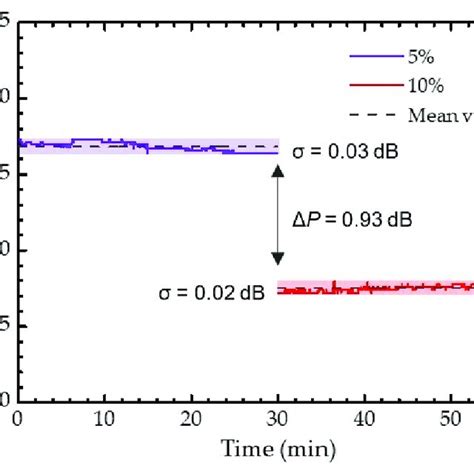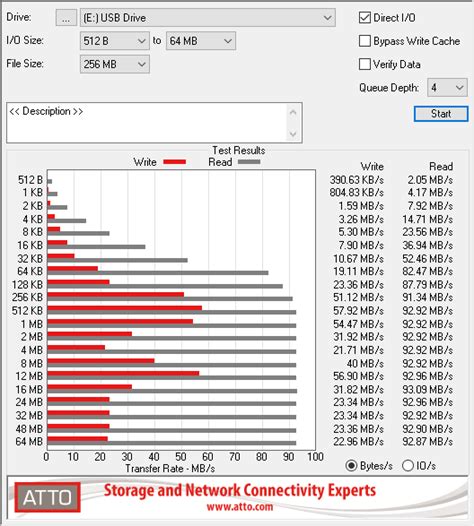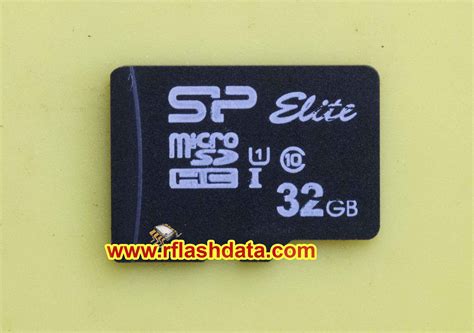Understanding the Importance of MicroSD Power Stability
In modern electronic devices, MicroSD cards have become an essential component for storing and accessing data. These tiny storage devices offer high capacity and fast read/write speeds, making them ideal for a wide range of applications, from smartphones and digital cameras to embedded systems and IoT devices. However, designing a reliable power circuit for MicroSD cards can be challenging, as their power requirements can potentially destabilize the on-board voltage supply, leading to system instability and data corruption.
To ensure the proper functioning of MicroSD cards and maintain the stability of the entire system, it is crucial to design a power circuit that can effectively handle the card’s power demands without compromising the on-board voltage supply. In this article, we will explore the key considerations and best practices for designing MicroSD power circuits, focusing on techniques to minimize voltage fluctuations and maintain overall system stability.
MicroSD Card Power Requirements
Before diving into the design of MicroSD power circuits, it is essential to understand the power requirements of these storage devices. MicroSD cards typically operate at a voltage of 3.3V or 1.8V, depending on the card’s specification and the host device’s capabilities. The following table summarizes the power requirements for different MicroSD card types:
| MicroSD Card Type | Operating Voltage | Maximum Current Draw |
|---|---|---|
| Standard MicroSD | 3.3V | 100mA |
| MicroSDHC | 3.3V | 200mA |
| MicroSDXC | 3.3V / 1.8V | 200mA |
It is important to note that these values represent the maximum current draw under peak load conditions, such as during high-speed data transfers or card initialization. In most cases, the actual current consumption will be lower, depending on the card’s activity level and the specific application requirements.

Designing a Stable MicroSD Power Circuit
To design a stable MicroSD power circuit, several key factors must be considered, including voltage regulation, current sourcing capabilities, and noise reduction techniques. Let’s explore each of these aspects in detail.
Voltage Regulation
The first step in designing a stable MicroSD power circuit is to ensure proper voltage regulation. This involves using a voltage regulator to convert the system’s main power supply to the required 3.3V or 1.8V for the MicroSD card. There are two main types of voltage regulators suitable for this purpose: linear regulators and switching regulators.
Linear Regulators
Linear regulators, such as the popular LDO (Low Dropout) regulators, offer a simple and cost-effective solution for MicroSD power regulation. These regulators work by maintaining a constant output voltage, regardless of variations in the input voltage or load current. LDO regulators are particularly well-suited for low-power applications, as they have a low quiescent current and can operate with a small voltage dropout, minimizing power dissipation.
When selecting a linear regulator for your MicroSD power circuit, consider the following factors:
– Input voltage range: Ensure that the regulator can handle the system’s main power supply voltage.
– Output voltage accuracy: Choose a regulator with tight voltage tolerance to maintain a stable output for the MicroSD card.
– Current rating: Select a regulator that can supply the maximum current required by the MicroSD card, with some headroom for peak demands.
– Dropout voltage: Opt for a low-dropout regulator to minimize power dissipation and improve efficiency.
Switching Regulators
Switching regulators, such as buck converters, offer a more efficient alternative to linear regulators, especially in high-power applications or when a large voltage step-down is required. These regulators work by rapidly switching an inductor on and off, using pulse-width modulation (PWM) to control the output voltage. While more complex than linear regulators, switching regulators can achieve higher efficiency and generate less heat, making them suitable for battery-powered devices or systems with limited thermal budgets.
When choosing a switching regulator for your MicroSD power circuit, consider the following factors:
– Input voltage range: Ensure that the regulator can handle the system’s main power supply voltage.
– Output voltage accuracy: Select a regulator with good load and line regulation to maintain a stable output voltage.
– Current rating: Choose a regulator that can supply the maximum current required by the MicroSD card, with sufficient margin for peak demands.
– Switching frequency: Higher switching frequencies allow for smaller inductors and capacitors, but may increase electromagnetic interference (EMI) and power losses.
– Efficiency: Opt for a high-efficiency regulator to minimize power dissipation and extend battery life in portable devices.
Current Sourcing Capabilities
In addition to voltage regulation, it is crucial to ensure that the MicroSD power circuit can provide sufficient current to meet the card’s peak demands. This is particularly important during card initialization and high-speed data transfers, when current consumption can briefly spike to several hundred milliamps.
To accommodate these peak current demands, the power circuit should include adequate decoupling capacitors close to the MicroSD card socket. These capacitors act as local energy reservoirs, supplying the card with the necessary current during transient loads and helping to stabilize the voltage supply. The following table provides general guidelines for selecting decoupling capacitors based on the MicroSD card type:
| MicroSD Card Type | Recommended Decoupling Capacitance |
|---|---|
| Standard MicroSD | 10μF – 22μF |
| MicroSDHC | 22μF – 47μF |
| MicroSDXC | 47μF – 100μF |
It is generally advisable to use ceramic capacitors with low ESR (Equivalent Series Resistance) for decoupling purposes, as they provide better high-frequency performance and minimize voltage ripple. Place the decoupling capacitors as close to the MicroSD card socket as possible to minimize the effects of trace inductance and ensure optimal transient response.
Noise Reduction Techniques
Minimizing noise in the MicroSD power circuit is essential for maintaining signal integrity and preventing data corruption. There are several techniques that can be employed to reduce noise and improve overall system stability:
Filtering
Incorporating filtering components, such as ferrite beads and capacitors, can help attenuate high-frequency noise and ripple in the power supply. Ferrite beads act as high-frequency chokes, presenting a high impedance to noise while allowing DC current to pass through. Place a ferrite bead in series with the MicroSD card’s power pin, followed by a ceramic capacitor to ground, to create a low-pass filter that suppresses high-frequency noise.
Grounding
Proper grounding is crucial for minimizing noise and ensuring stable operation. Use a solid ground plane in your PCB design, and connect the MicroSD card’s ground pin directly to this plane using a low-impedance path. Avoid sharing ground paths with other noisy components, such as switching regulators or high-speed digital circuits, to prevent ground bounce and cross-talk.
PCB Layout
Careful PCB layout is essential for minimizing noise and ensuring the stability of the MicroSD power circuit. Follow these best practices:
– Keep power traces as short and wide as possible to minimize inductance and resistance.
– Separate analog and digital ground planes, and connect them at a single point to avoid ground loops.
– Place the voltage regulator and decoupling capacitors close to the MicroSD card socket to minimize trace lengths and improve transient response.
– Route sensitive signals, such as data lines, away from noisy power traces to avoid crosstalk and interference.

Testing and Validation
Once you have designed your MicroSD power circuit, it is essential to thoroughly test and validate its performance to ensure that it meets the required specifications and maintains system stability. Some key aspects to test include:
- Voltage regulation: Verify that the MicroSD card receives a stable and accurate voltage supply under various load conditions.
- Current sourcing: Ensure that the power circuit can provide sufficient current to meet the MicroSD card’s peak demands without excessive voltage drop or instability.
- Noise and ripple: Measure the power supply noise and ripple using an oscilloscope, and confirm that they are within acceptable limits for the MicroSD card’s specifications.
- Transient response: Test the power circuit’s response to sudden load changes, such as card insertion or removal, and verify that the voltage remains stable and within the required tolerance.
By thoroughly testing and validating your MicroSD power circuit, you can identify and address any potential issues before finalizing your design, ensuring a robust and reliable solution for your application.

FAQ
-
Q: What are the most common voltage levels used for MicroSD cards?
A: MicroSD cards typically operate at either 3.3V or 1.8V, depending on the card’s specification and the host device’s capabilities. Standard MicroSD and MicroSDHC cards generally use 3.3V, while MicroSDXC cards can support both 3.3V and 1.8V. -
Q: What is the purpose of decoupling capacitors in a MicroSD power circuit?
A: Decoupling capacitors serve as local energy reservoirs, supplying the MicroSD card with the necessary current during transient loads and helping to stabilize the voltage supply. They are placed close to the MicroSD card socket to minimize the effects of trace inductance and ensure optimal transient response. -
Q: How can I reduce noise in my MicroSD power circuit?
A: To reduce noise in your MicroSD power circuit, you can employ several techniques, such as incorporating filtering components (e.g., ferrite beads and capacitors), ensuring proper grounding, and optimizing your PCB layout. These measures help attenuate high-frequency noise, minimize ground bounce and cross-talk, and improve overall system stability. -
Q: What are the advantages of using a switching regulator instead of a linear regulator for MicroSD power circuits?
A: Switching regulators, such as buck converters, offer higher efficiency and generate less heat compared to linear regulators, making them suitable for battery-powered devices or systems with limited thermal budgets. They are particularly advantageous in high-power applications or when a large voltage step-down is required. -
Q: Why is it important to test and validate my MicroSD power circuit?
A: Testing and validating your MicroSD power circuit is crucial for ensuring that it meets the required specifications and maintains system stability. By thoroughly testing aspects such as voltage regulation, current sourcing, noise and ripple, and transient response, you can identify and address any potential issues before finalizing your design, ensuring a robust and reliable solution for your application.
Conclusion
Designing a stable and reliable MicroSD power circuit is essential for ensuring the proper functioning of MicroSD cards and maintaining the overall stability of your electronic device. By understanding the power requirements of MicroSD cards, selecting appropriate voltage regulators, incorporating adequate decoupling capacitors, and implementing noise reduction techniques, you can effectively manage the card’s power demands without compromising the on-board voltage supply.
Remember to carefully consider factors such as voltage regulation, current sourcing capabilities, and PCB layout when designing your MicroSD power circuit, and always thoroughly test and validate your design to ensure that it meets the required specifications and maintains system stability.
By following the best practices and guidelines outlined in this article, you can confidently design MicroSD power circuits that provide a stable and reliable power supply for your MicroSD cards, enabling optimal performance and data integrity in your electronic devices.

Leave a Reply